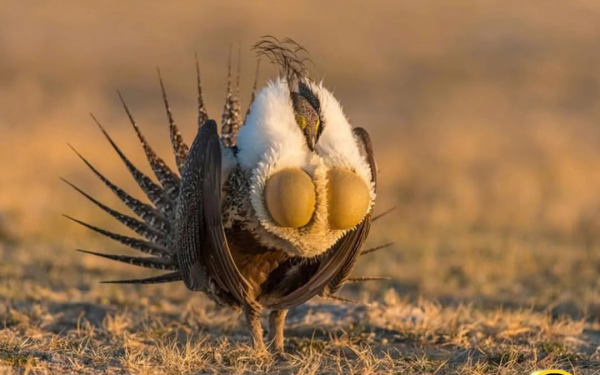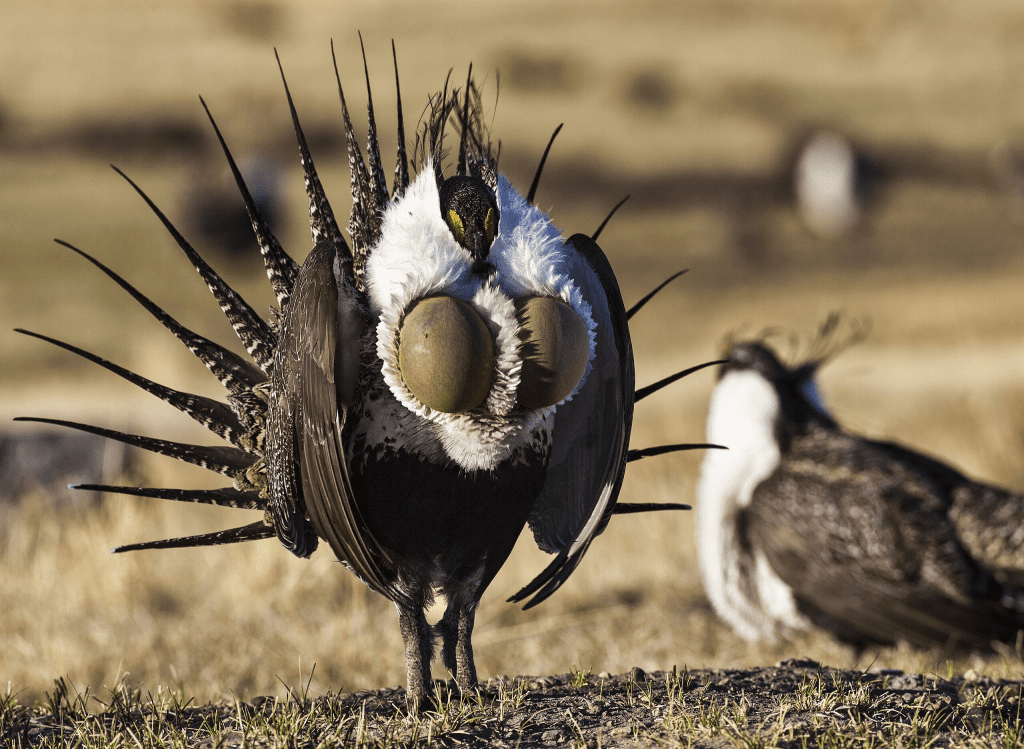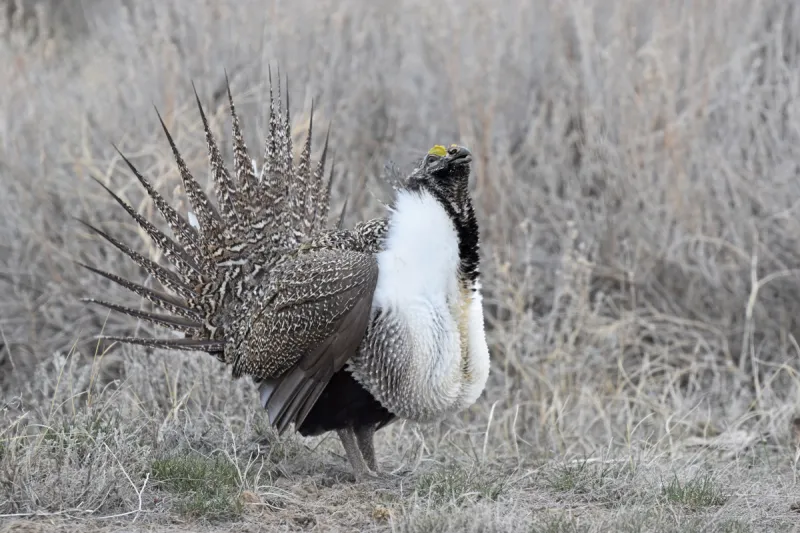Grouse are a captivating group of birds that inhabit some of the most stunning and diverse landscapes in the Northern Hemisphere. Known for their unique behaviors and fascinating adaptations, these birds belong to the tribe Tetraonini or subfamily Tetraoninae (within the pheasant family, Phasianidae). Grouse have intrigued scientists, birdwatchers, and hunters for centuries. Let’s dive into their scientific classification, habitat, diet, and fascinating behaviors, shedding light on what makes these birds so extraordinary.
Scientific Classification of Grouse

The classification of grouse has been refined over time thanks to advancements in mitochondrial DNA research. Various organizations, including the American Ornithological Society and the International Ornithologists’ Union, recognize these birds as part of the pheasant family (Phasianidae), within the order Galliformes.
Grouse are closely related to other chicken-like birds, sharing many similarities in appearance and behavior. Despite their resemblance to partridges, grouse possess distinct traits and ecological adaptations that set them apart.
Where Do Grouse Live?
One of the most striking aspects of grouse is their wide-ranging habitat. These birds are found in temperate and subarctic regions of the Northern Hemisphere, spanning diverse ecosystems:
- Coniferous Forests: Many grouse species, such as the spruce grouse, thrive in dense coniferous forests, where they forage for seeds and buds.
- Moors and Heathlands: Species like the red grouse are commonly associated with moorlands covered in heather, a crucial food source.
- Mountain Slopes: Rock ptarmigans inhabit rugged, high-altitude terrains, blending seamlessly into snowy landscapes.
- Grasslands: Prairie chickens, including Attwater’s prairie chicken, inhabit open grasslands and shrub-covered hills.
Grouse have an impressive geographical range, extending from 83°N in northern Greenland (where the rock ptarmigan resides) to 28°N in Texas (home to Attwater’s prairie chicken). This adaptability highlights their ability to thrive in diverse climates and ecosystems.
Diet: What Do Grouse Eat?
Grouse primarily feed on plants and seeds, making them herbivorous foragers. Depending on their habitat and the season, their diet may include:
- Leaves and Buds: In colder months, grouse rely on tree buds, conifer needles, and shrubs for sustenance.
- Berries and Fruits: In summer and fall, they enjoy a variety of berries and fruits found in their habitat.
- Insects (Occasionally): Although rare, some grouse species may consume insects during the breeding season, providing additional protein to support their energy needs.
Their foraging habits often involve digging through snow or soil to uncover food, showcasing their adaptability in even the harshest conditions.
Behavior and Social Dynamics
Grouse exhibit fascinating behaviors, including their mating rituals, social structures, and survival strategies.
Solitary Nature
Unlike many bird species, grouse are typically solitary or found in pairs. They avoid forming large flocks, relying instead on their sharp senses and camouflage to evade predators.
Cautious and Sensitive
Grouse are highly cautious birds with exceptional hearing. They can detect human footsteps from hundreds of meters away, making them challenging to approach. This heightened awareness is crucial for their survival in the wild.

The Peculiar “Deafness” of Grouse
One of the most intriguing aspects of grouse behavior is their temporary “deafness” during mating calls.
When a male grouse emits its distinct mating call, it enters a trance-like state, becoming motionless and seemingly oblivious to surrounding sounds or movements. This phenomenon has fascinated hunters and scientists alike.
A Hunter’s Strategy
Hunters have long taken advantage of this behavior. By quietly approaching a calling male grouse, hunters can get close enough to capture or shoot the bird. While this tactic is controversial, it highlights how human ingenuity has adapted to the challenges posed by these highly sensitive birds.
The Role of Grouse in Ecosystems
Grouse play a vital role in maintaining the balance of their ecosystems.
- Seed Dispersal: As they forage on berries and plants, grouse inadvertently help disperse seeds, contributing to plant regeneration and biodiversity.
- Prey for Predators: Grouse serve as an essential food source for many predators, including foxes, hawks, and owls, supporting the food chain.
Their presence is often an indicator of a healthy ecosystem, making their conservation critical for maintaining biodiversity.
Grouse vs. Partridges: Are They the Same?
While grouse are often referred to as “partridges” in common language, they are distinct birds with different ecological niches.
- Physical Differences: Grouse tend to have thicker plumage and larger bodies than partridges, adaptations that help them survive colder climates.
- Behavior: Grouse are more solitary and cautious, while partridges are often found in small coveys.
- Habitat: Partridges typically prefer open fields and farmlands, whereas grouse inhabit a broader range of environments, including forests, mountains, and moors.
Despite these differences, the two bird groups share similarities in diet, nesting habits, and overall appearance, which often leads to confusion.

Conservation Concerns and Challenges
Like many wildlife species, grouse face significant challenges due to habitat loss, climate change, and human activities.
Habitat Destruction
Deforestation, agriculture, and urban development have reduced the habitats available to grouse, forcing them into smaller, fragmented areas.
Climate Change
Changes in temperature and precipitation patterns can disrupt the ecosystems grouse rely on, affecting their food sources and nesting sites.
Hunting Pressure
While regulated hunting can be sustainable, overhunting poses a threat to some grouse populations. Conservation efforts are crucial to ensuring these birds continue to thrive.
Why Grouse Are Worth Protecting
Grouse are not just another bird species—they are fascinating creatures with unique behaviors, vital ecological roles, and an undeniable charm. Protecting their habitats and ensuring sustainable practices will not only safeguard their future but also benefit the ecosystems they inhabit.
By learning about and appreciating grouse, we can better understand the delicate balance of nature and the importance of preserving it for generations to come.
Conclusion: A Bird Worth Admiring
From their wide-ranging habitats to their quirky behaviors, grouse are truly remarkable birds. Whether you’re a nature enthusiast, a birdwatcher, or simply someone who enjoys learning about wildlife, there’s no denying the allure of these cautious yet captivating creatures.
Their story reminds us to look closer at the natural world and appreciate the intricacies that make it so extraordinary. The next time you hear about grouse, think beyond the name—consider their unique role in ecosystems, their fascinating behaviors, and the efforts needed to protect them.